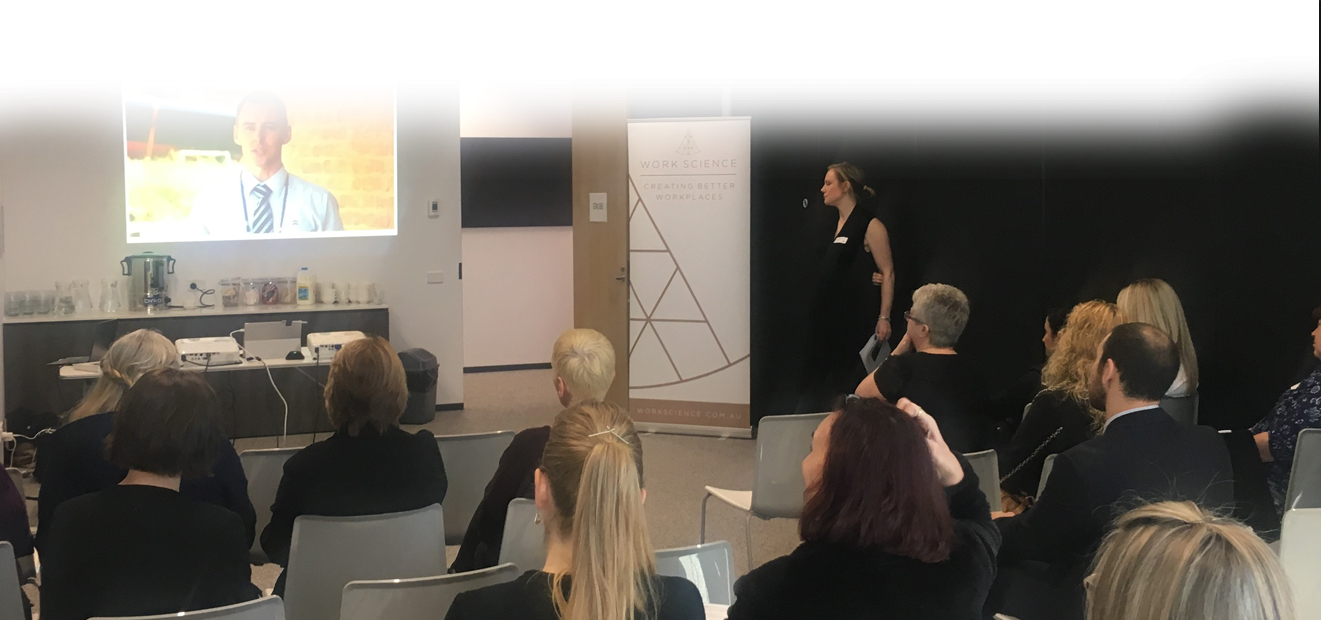AHRI WHS Forum Canberra: Addressing Occupational Violence
Last Friday almost 20 of Canberra’s hardiest WHS and HR professionals braved a one-degree morning to attend our first AHRI WHS Forum in Canberra.
Chelsea Cook, National SHEQ Manager at Defence Housing Australia shared the three-year journey her organisation has travelled to foster safer staff behaviour and interactions with the community.
DHA’s First Response Program combined open consultation with affected field workers, operations and executive management; comprehensive learning modules; training; and the provision of personal safety devices. Recent winner of the Comcare Prevention Award last month, it was a practical and thorough insight into addressing occupational violence in the APS.
Following the presentation, we did some quick polling of participants:
- There was an interesting contrast with the previous AHRI WHS Forum in Sydney which had mostly private sector attendees.
- The same proportion of Canberra and Sydney forum attendees believe all workplace injuries are preventable (approx. 40%)
- Our Canberra forum of predominantly APS attendees indicated almost 50% of their organisations were committed to Zero Harm principles, versus only 5% in Sydney.
- Further, while 85% of our Canberra attendees said WHS harmonisation had introduced significant change to their organisation, more than half of our Sydney (private sector) said WHS harmonisation had not introduced significant change, indicating the 2011 legislation may have been a catalyst for APS agencies to overhaul their WHS management systems.
- Lastly, more than 80% of attendees believe occupational violence is a risk in their organisation
Insights: Implementing a successful occupational violence mitigation program:
- Key barrier to overcome is the cultural barriers / engrained behaviours. Everybody wants to be safe, but nobody thinks the outlier incidents will happen to them. Sometimes the perception of a must meet KPIs culture results in field workers exposing themselves to greater risk.
- Occupational violence is linked to incident reporting, and sometimes cultures with poor occupational violence scores also have low engagement with WHS in general. Paradoxically incidents and near misses can increase after a program is introduced because of the increased engagement and reporting. Look to metrics over two to three-year period and highlight decreasing WCC penalty payments, lower premiums, and higher scores in staff engagement surveys to measure program success.
- Stakeholder consultation by centralised WHS/HR teams with operational divisions and executive management (program funders/approvers) is critical for effective implementation. Change programs that address risky behaviour before providing personal safety devices highlight the prevention focus – i.e. be risk aware and avoid entering situations that may require the use of a safety device.
- Focus on change program that highlights positive reinforcement. Both during the program roll out and post-implementation. Promoting cases of good safety device use across the organisation brings to life the ‘outlier risk’ and encourages program adoption.
We have worked with DHA for two years helping develop its Prevention First WHS Management system, and helped public and corporate clients to mitigate occupational violence in the workplace.
If you are interested in improving the safety and wellbeing of your in-office or field worker staff get in touch with us to discuss further: [email protected].

